There a quite a few reasons not to buy a 2023 Nissan Leaf, but paradoxically, despite having some significant shortcomings, the updated version of this pioneering electric vehicle could be the ideal EV for you.
Soldiering on for another model year, the Leaf received some mild enhancements for 2023, just don’t expect groundbreaking technical innovation, sweeping design changes or massive interior upgrades. The car’s grille shape has been tweaked and so has the front bumper molding. The headlights now feature black inner finishers opposed to chrome, and SV Plus models roll on new 17-inch wheels that have sort of a 1980s look to them. In addition to all that, the Leaf’s front and rear deflectors are now black instead of blue, the rear diffuser and spoiler have been modified, and inside, there’s a new Nissan badge on the steering wheel plus a revised startup animation. Again, no monumental changes.
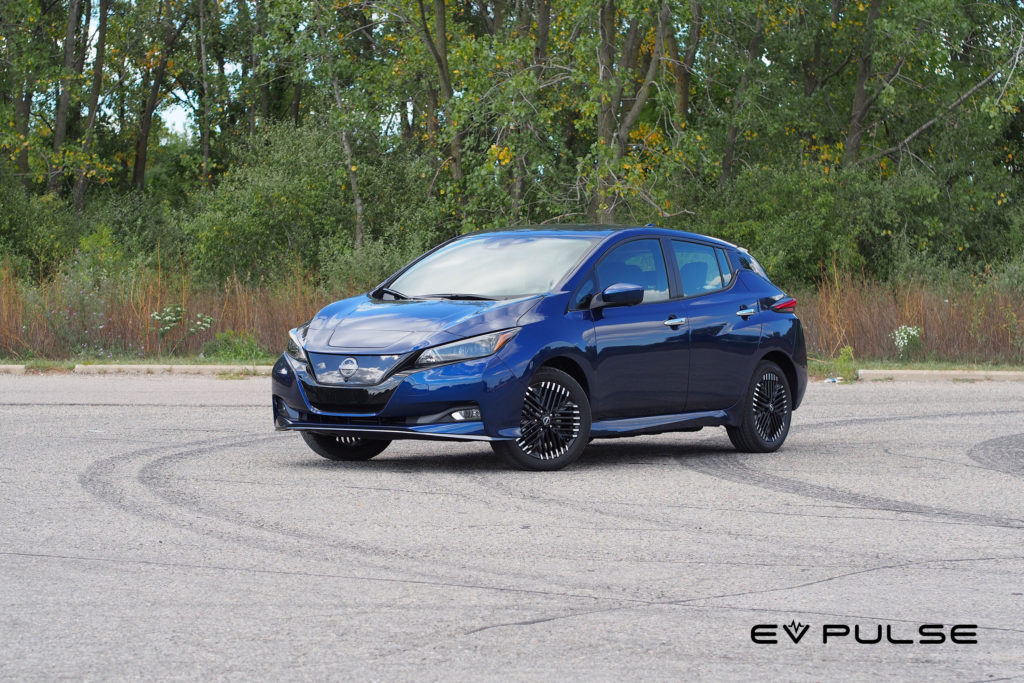
Keeping things simple, the Nissan Leaf is offered in two flavors: S and SV Plus. The base car comes with 147 horsepower and 236 pound-feet of torque as well as a diminutive, 40-kWh lithium-ion battery that provides just 149 miles of range, pretty weak for the 2023 model year.
SEE ALSO: Jeep’s Jim Morrison talks Wrangler 4xe sales, Grand Cherokee 4xe ramp up, and potential Gladiator 4xe
The SV Plus, which is what’s being tested here, hits a little harder, delivering 214 horsepower and 250 pound-feet of torque. No, this Nissan is not going to outrun a Lucid Air, but the performance is stronger than you’d expect given those modest numbers.
Uplevel models also features a larger 60-kWh battery pack that gives you an EPA-estimated 212 miles of range, which, again, won’t set the world ablaze even though it’s far better than what the base car offers. Through a relatively rare CHAdeMO port, the Leaf SV Plus can DC fast charge at up to 100 kW, which is laughably slow these days. Still, according to Nissan, this vehicle should be able to hit an 80% state of charge after one hour.
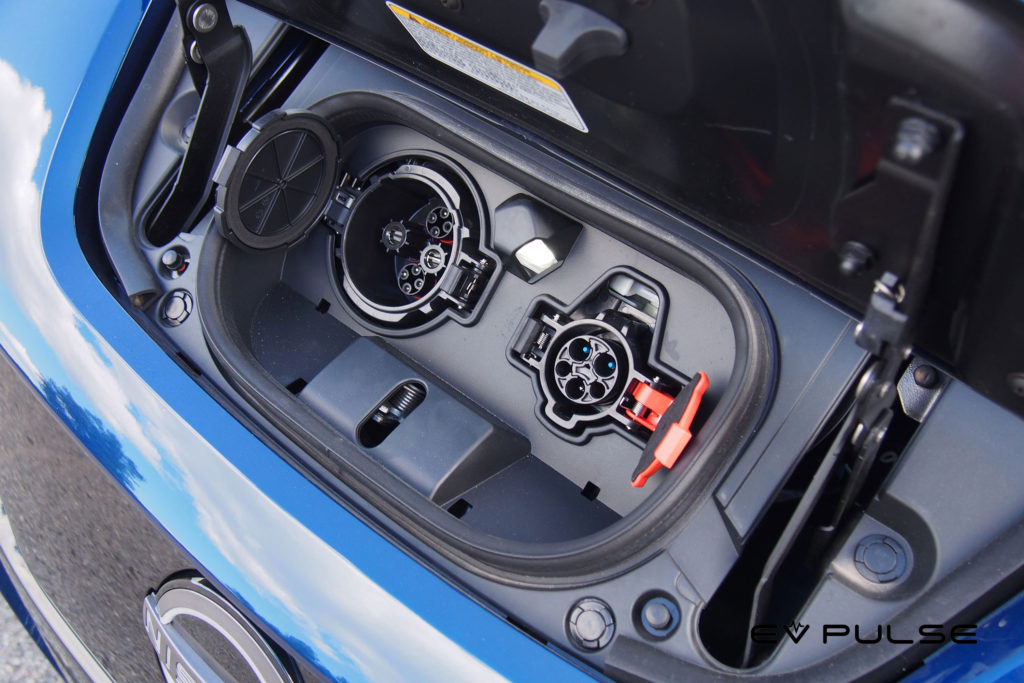
Just like its specs, the Leaf’s interior is getting on in years, though it holds up better than you might expect. There are some unusual design choices in this car’s cabin, but the materials look richer than they have any right to, plus everything is sturdy and well built.
The car’s bucket seats are wonderful, supple yet supportive, and they’re a nice height above the floor, so it doesn’t feel like you’re sitting on the ground with your legs sticking straight out. The back seat is not quite as nice, however. It’s upright and offers a good amount of legroom, but headroom for taller passengers is lacking; there’s also an annoying tunnel running through the middle of the floor.
One thing that’s odd about the Nissan Leaf’s interior is the design of the door panels. The upper portion is hard plastic, the lower section is barely padded and the middle area, where an elbow would never rest, is nice and soft. Why? Put the squishy-soft stuff where you arms actually rest.
When it comes to tech, there’s an 8-inch touch screen that’s it’s easy to see and reach. This infotainment system is extremely outdated, but it is intuitive and surprisingly responsive, so it’s not all bad news, plus Android Auto and Apple CarPlay are standard, though you do need a cable. As wireless smartphone mirroring becomes more and more prevalent, I find I actually prefer plugging my handset in to access this functionality. It’s more reliable and seems to charge the battery far quicker than a wireless charger.
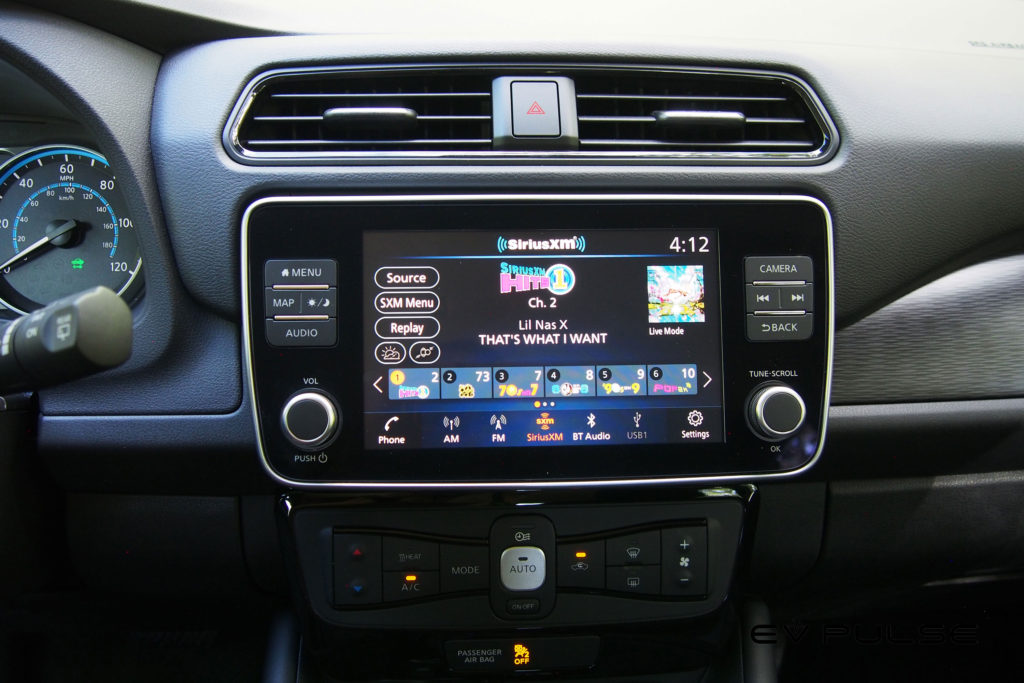
A favorite feature of the Leaf’s interior is the design of the climate controls. There are physical buttons and switches right on the dashboard, what an innovation! These are easy to see and use, plus you don’t have to deal with some damn touch screen just to change the fan speed.
In addition to all that, SV Plus models come standard with an Intelligent Around View Monitor, though the video feeds are grainier than a silo full of wheat. Still, having a low-quality 360-degree camera system is better than not having one at all.
Every 2023 Leaf features Nissan Safety Shield 360. This bundles a host of advanced driver aids into one suite, including automatic emergency braking, lane-departure warning, blind spot monitoring, rear cross-traffic alert, automatic high beams and rear automatic braking.
WHAT?! Ford Pro’s insane Electric Supervan is testing on the Nurburgring
Despite its relatively low horsepower and torque figures, the 2023 Nissan Leaf SV Plus accelerates with unexpected authority. This is a punchy little EV with plenty of off-the-line scoot, which makes it feel quick and agile. One downside to this performance, however, is torque steer, and the Leaf has plenty of it. You’ve got to fight the wheel to keep this car going in a straight line when you’re really on the power. Torque steer is most pronounced on uneven pavement at around 40 mph when you’re heavily accelerating.
Like any proper EV, the Leaf offers a one-pedal driving mode, which you access via a convenient hardware switch right on the center console, so there’s no need to poke around the infotainment screen. This system works as advertised, maximizing energy recuperation and allowing the Leaf to roll to a stop on its own when you lift off the accelerator. When it’s time to actually use the brakes, the pedal itself is rubbery and vague. The brakes in newer EVs feel much more natural.
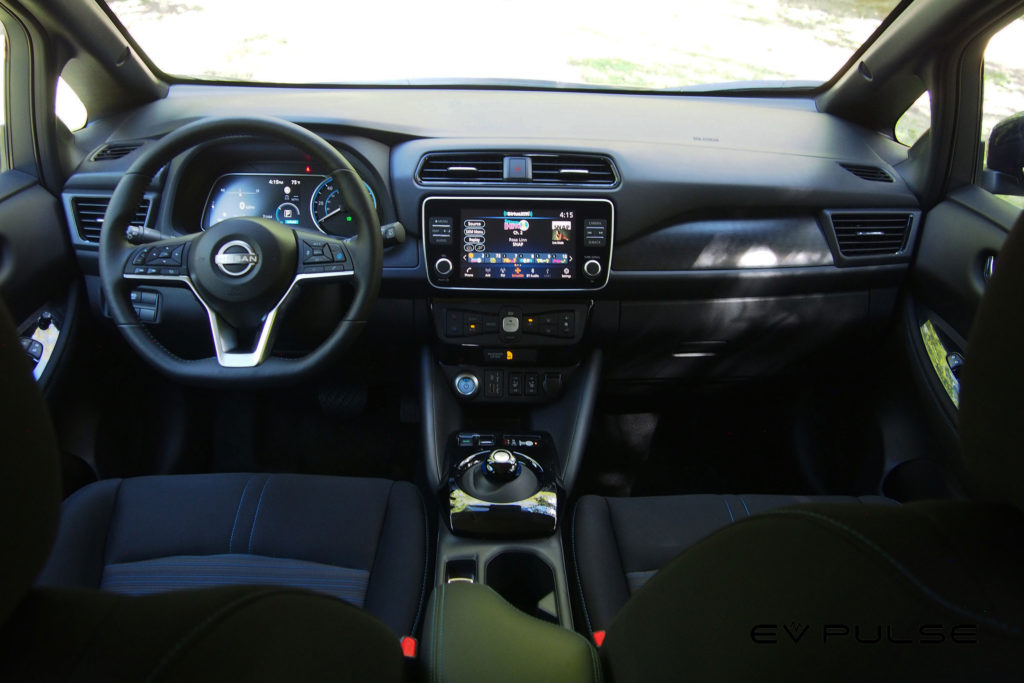
The Leaf’s steering is light and relatively quick, which makes the car feel nimble, but there’s no feedback from the front tires, not that I expect any. Like other modern vehicles, this EV’s steering feels completely synthesized, like something from a video game.
Making highway drives just a little easier is Nissan’s excellent ProPilot Assist adaptive cruise control with lane centering, which is standard on the Leaf SV Plus. This is not a hands-off system like GM’s pioneering Super Cruise or Ford BlueCruise, but it’s still a huge help. ProPilot Assist adjusts speed according to traffic conditions and keeps the vehicle locked in the middle of the lane, which greatly reduces your workload on long trips.
The Leaf competes with other small, battery-powered hatchbacks, cars like the Chevy Bolt, Hyundai Kona Electric and Mini Cooper SE Hardtop. As mentioned earlier, the base Leaf S has 147 horsepower, which doesn’t compare very favorably to these rivals. The Bolt has an even 200 ponies in its under-hood stable, the Kona is graced with 201 and even the Mini is more muscular with its 181 horsepower.
Range is another weakness of the base Leaf, which can only go 149 miles between charges. The Chevy is tops in this comparison, offering 259 miles of range, though the Kona is basically the same at 258. The Mini is rated at just 114 miles on a charge, meaning this entry-level Nissan has an edge.
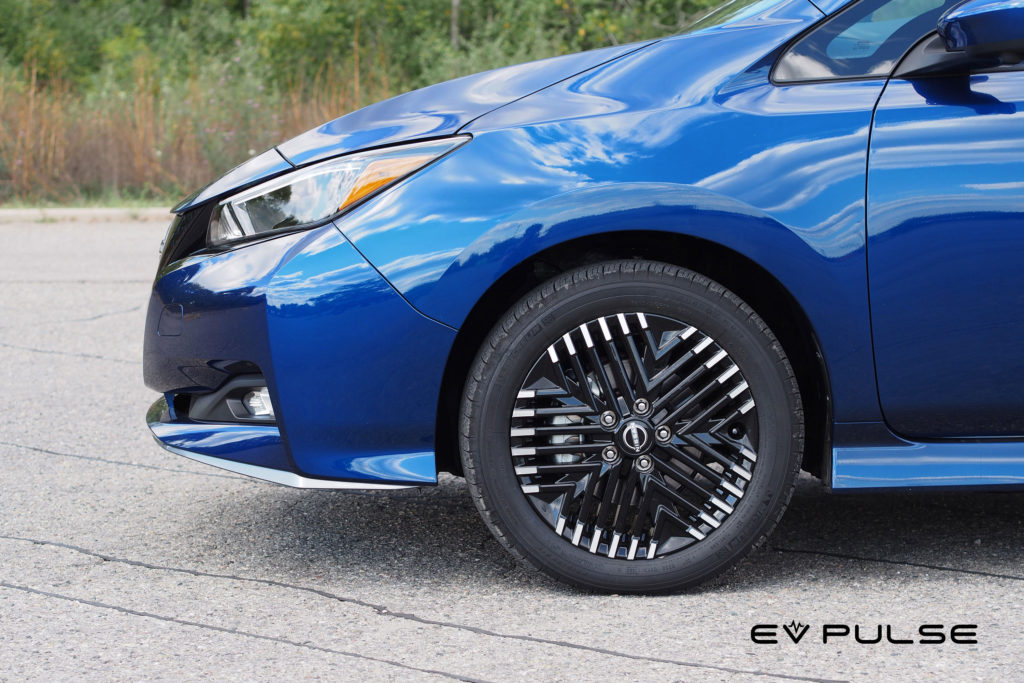
Pricing is another area where the Leaf S holds its own. This vehicle starts at just shy of $29,000 including $1,095 in delivery fees. Also including mandatory shipping and handling charges, the Chevy goes for around $26,595, the Hyundai checks out for about $35,295 and the Mini can be yours for roughly $35,000.
CHECK THIS OUT: Electrify America adding ‘Hyper-Fast’ and ‘Ultrafast’ labels to its chargers
Of course, the Leaf SV Plus is a much better match for these competing EVs, though it is more expensive. With 214 horsepower, it outmuscles these competing cars, though its EPA-estimated range of 212 miles is merely OK. As it sits, our tester checks out for just about $37,000, meaning it’s a bit pricier than the entry-level versions of those other EVs, though the car is still eligible for up to a $7,500 federal tax credit, which drops the big number to less than 30 grand, which is a very attractive figure.
Wrapping things up, the Leaf’s strong acceleration is a high point, as are its cushy front seats and available ProPilot assist. Unfortunately, other aspects of this Nissan are not competitive with the latest crop of electric vehicles. The range is not great, the Leaf’s DC fast charging isn’t and much of this car’s tech — from the infotainment system to the 360-degree camera — is functional, though quite outdated.
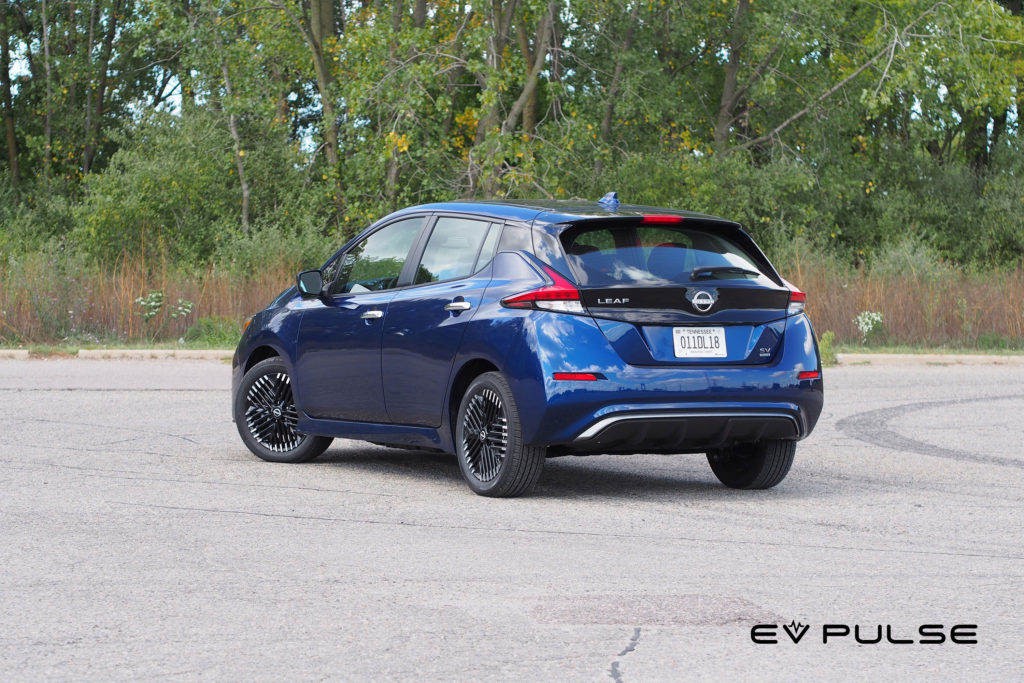
So, should you get a 2023 Nissan Leaf or avoid this car like that suspiciously friendly barista at your local coffee shop? Well, it all depends on how you drive. This is a great option for local, around-town use, but the Leaf would be very frustrating on long trips because of the slow charging. Newer EVs have huge advantages, but the car is still well built and pleasant enough to drive, so it’s worth considering as long as you’re aware of its shortcomings.
At a glance
- Year: 2023
- Make: Nissan
- Model: Leaf
- Trim: SV Plus
- Type: 4-door electric hatchback
- Horsepower: 214
- Torque: 250
- MPGe ratings (city/highway/combined): 121/98/109
- Range: 212 miles
- Pros: Unexpectedly punchy performance, smooth ride, excellent ProPilot Assist driving aid
- Cons: Limited range, slow DC charging, feels outdated
- Estimated base price: $29,000
- Estimated as-tested price: $37,000
